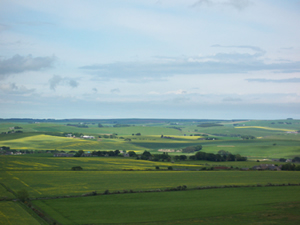 Best management practices are regarded as a means of reducing diffuse pollution from agriculture with the objective of achieving surface and ground water quality targets. However, it is unclear how successful such activities will be and the time-scale over which improvements in water quality will be observed. Catchment scale models that incorporate adequate representation of transport processes, including storage and mixing, can be used to explore these issues.
Best management practices are regarded as a means of reducing diffuse pollution from agriculture with the objective of achieving surface and ground water quality targets. However, it is unclear how successful such activities will be and the time-scale over which improvements in water quality will be observed. Catchment scale models that incorporate adequate representation of transport processes, including storage and mixing, can be used to explore these issues.
The Lunan catchment in the east of Scotland is the focus of several inter-disciplinary research projects to assess the social, economic and environmental benefits of a range of management options. The catchment is designated as a Nitrate Vulnerable Zone, because of the risk of exceedance of the EU drinking water limit of 50mg l-1 nitrate in groundwater. Our research is using this catchment as a case study to examine how the implementation of best management practices will help to reduce the concentrations of nitrate leached to groundwater, and the time-scales over which the groundwater quality can be expected to improve. This study will use naturally occurring tracers to estimate the residence times of water in the catchment and to model the response of the system to changes in agricultural management.
Our research in this area focuses on:
- Predicting catchment scale responses to best management practices
- Understanding residence times of water
Who is working in this area?
- Sarah Dunn
- Andy Vinten
- Martyn Futter
Keywords
- diffuse pollution, nitrate, recovery, residence times, groundwater
|
Updated: 23 Jan 2024, Content by: MC
|

